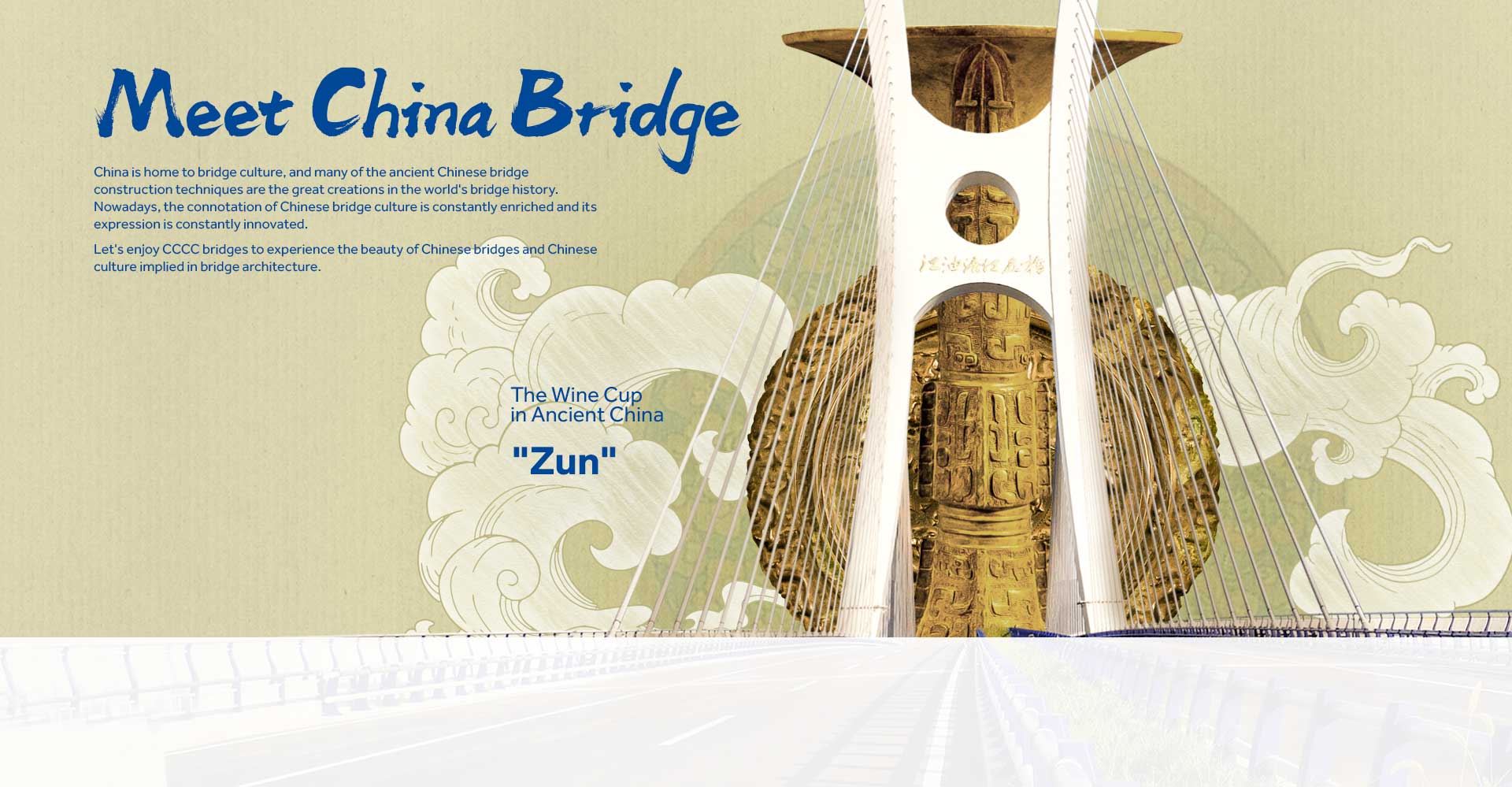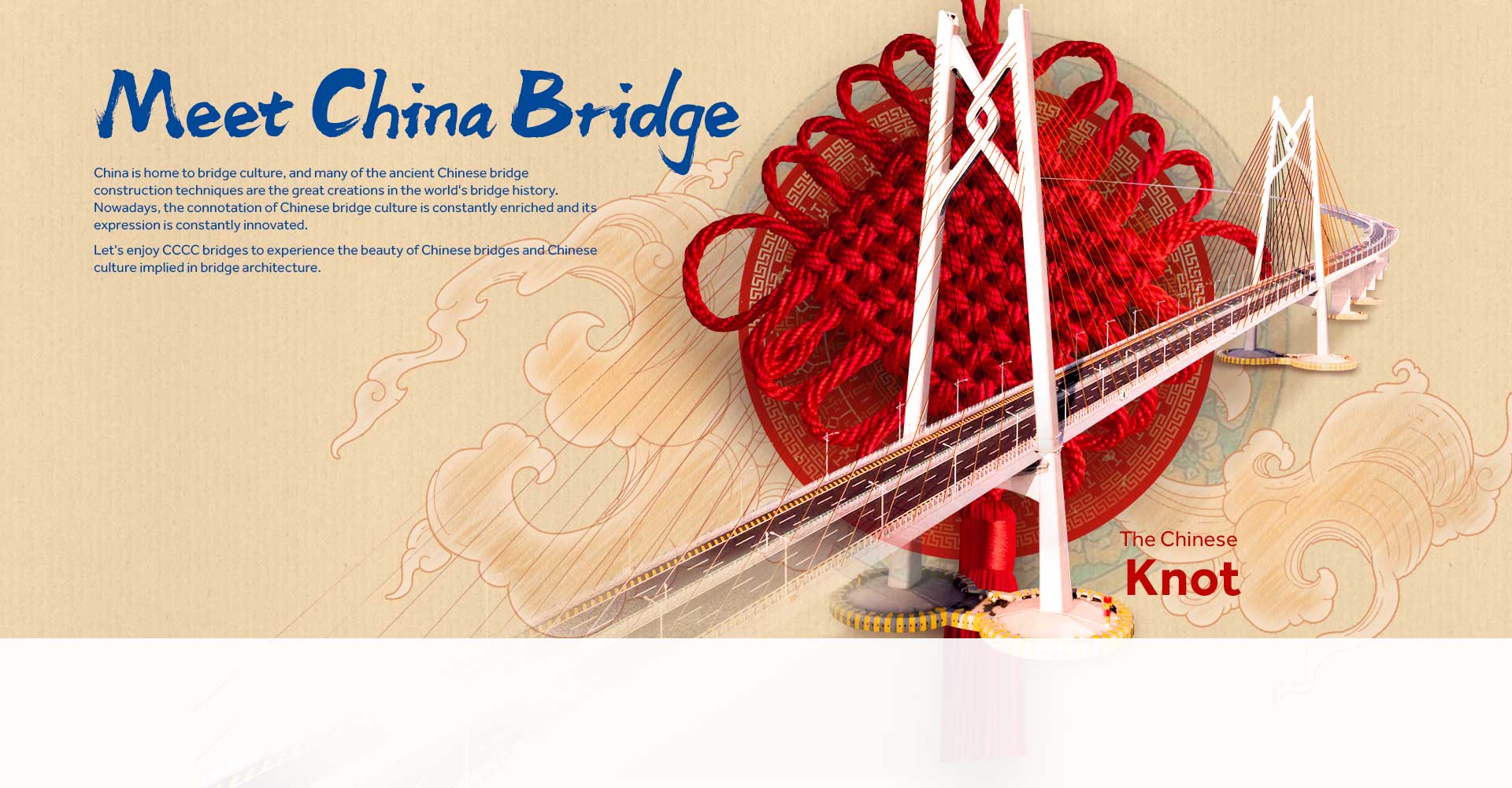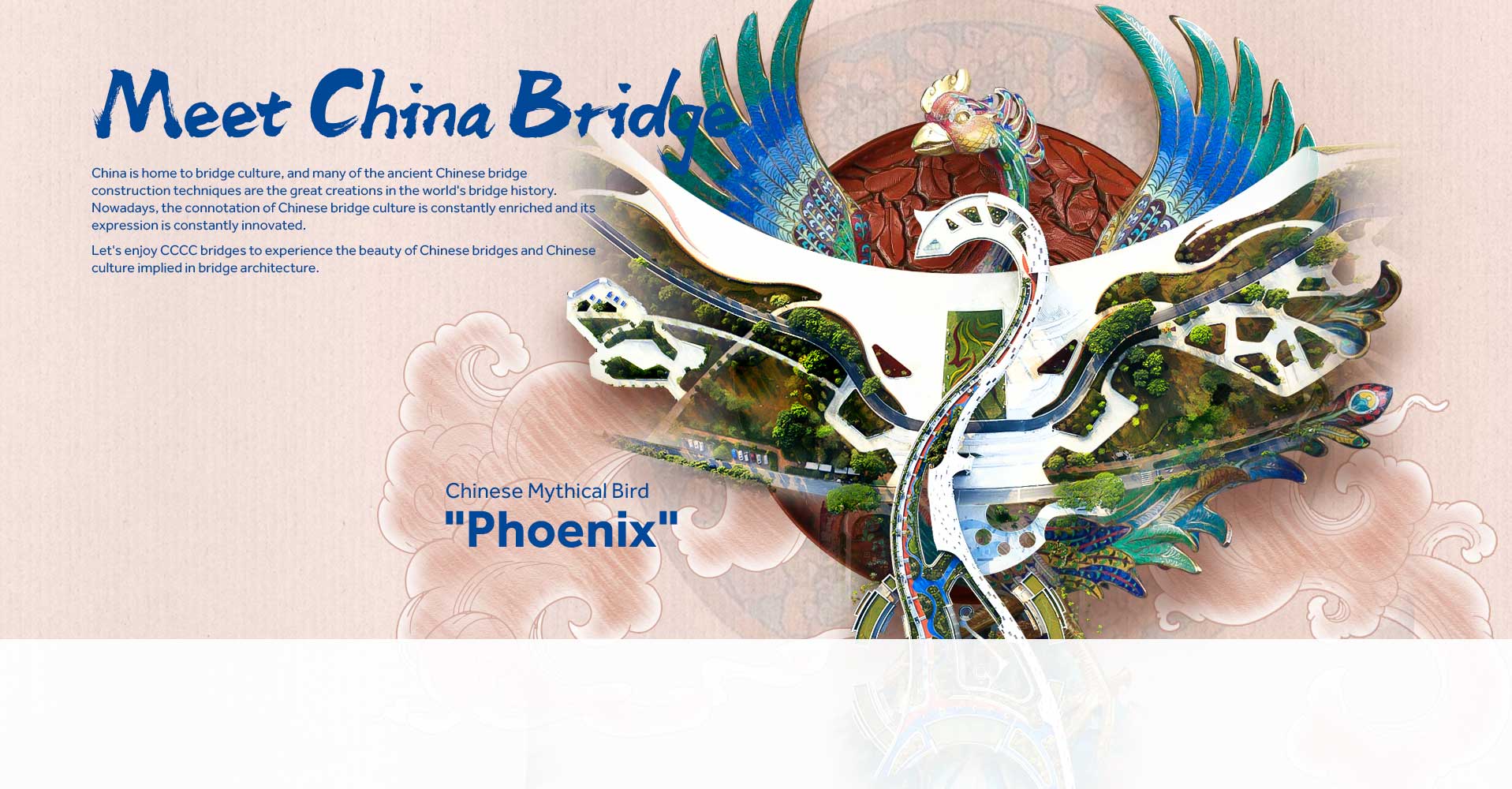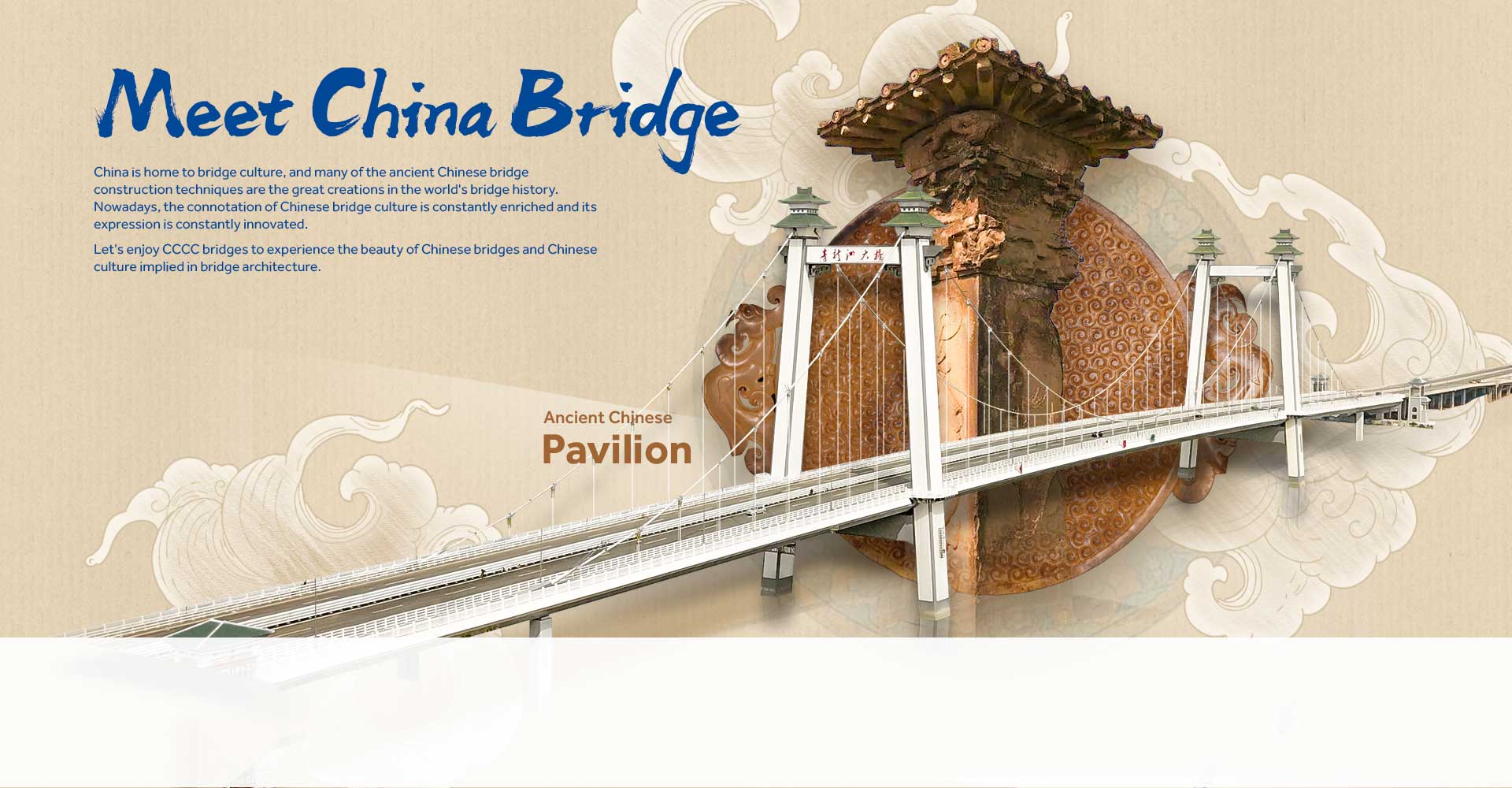

The Xiangxi River BridgeHubei
As an instrument treasure with unique artistic charm, the pipa is a four-stringed Chinese lute with over 2000 years of history.
Under the innovation of CCCCers, the Xiangxi River Bridge, located in Hubei Province, China, was the first to be designed in an orange pipa shape, which adds great charm to this cable-stayed bridge towering into the sky.


Fujiang River 5th BridgeSichuan
Zun, a kind of wine cup in ancient China, is exquisitely shaped and recognized as a status symbol of its owner.
The Fujiang River 5th Bridge is located in Jiangyou City, Sichuan Province, the hometown of the famous ancient Chinese poet Li Bai. Inspired by the “golden cup” in Li Bai’s poems, CCCCers designed this cable-stayed bridge in the shape of a zun, the wine cup, making it a unique landmark in Jiangyou City.


Hong Kong-Zhuhai-Macao BridgeThe Greater Bay Area
The Chinese knot, a traditional handicraft representing the wisdom of hardworking people, shows unique oriental charm symbolizing unity and good luck.
Under the innovation of CCCCers, the Qingzhou Channel Bridge section of the Hong Kong-Zhuhai-Macao Bridge was designed in the shape of Chinese knot. Standing above the Lingdingyang, the concise and beautiful Chinese knot-shaped bridge towers have become one of the most conspicuous signs of this mega project.


Air Corridor Bridge on Central Axis of Shunde Desheng New TownGuangdong
The phoenix, a mythical bird in ancient Chinese mythology, symbolizing good luck through thousands of years of Chinese history.
Built by CCCC, the air corridor bridge on the central axis of Shunde Desheng New Town in Guangdong Province, China, was designed in the shape of a phoenix, adding a splendid charm to the landscape of the urban central axis. Enjoy the phoenix-shaped bridge on the urban central axis!


Qinglongzhou BridgeHunan
With a two-way six-lane road, the 1636-m-long Qinglongzhou Bridge is the first self-anchored suspension bridge in Yiyang City, Hunan Province of China. Under the innovation of CCCCers, the main towers of the bridge were designed in the shape of two-story, four-corner pavilions, an important type of ancient Chinese architecture, which fits the surroundings and local culture perfectly.